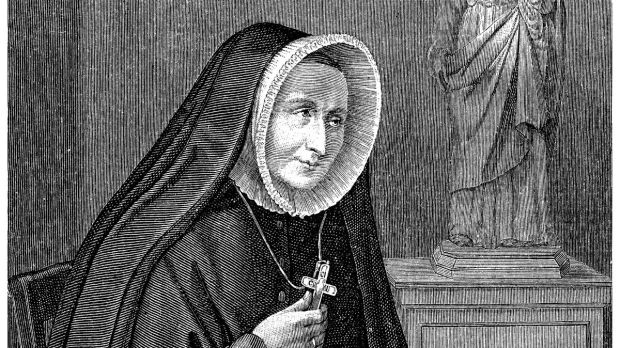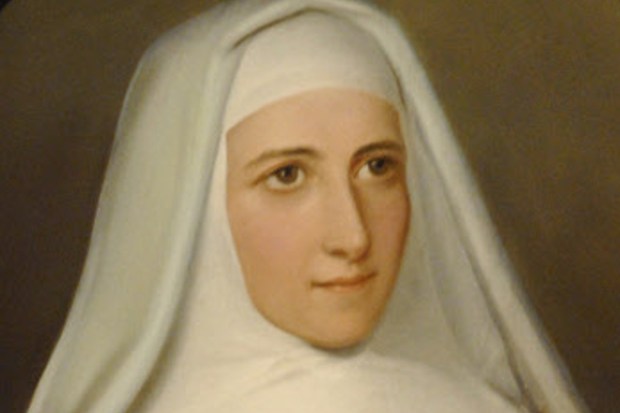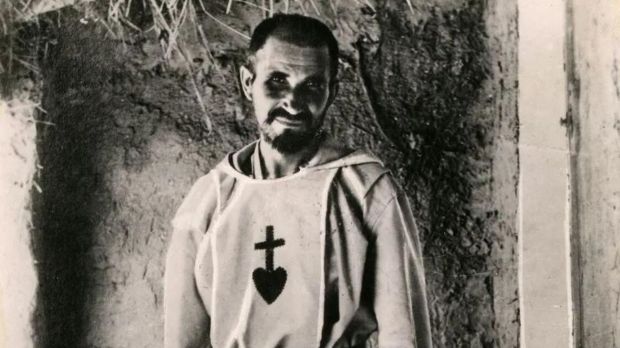One of the Saints whose relics will repose in the Altar is St Catherine Labouré, whose Feast was yesterday. May they all pray for us and for France.
From Aleteia
By Valdemar de Vaux
On December 8, the archbishop of Paris will dedicate the altar of Notre Dame of Paris. He will place a small reliquary inside, containing the relics of five saints.When Notre-Dame de Paris reopens its doors on December 7 and 8, it won't just be priests, faithful, and visitors who will be returning to a restored and magnificent cathedral. Five saints will also enter the immaculate nave. Or rather, their relics will!
The Church inserts a small “tomb” inside every permanent altar. In this sealed container are the remains of people who have lived not according to worldly standards, but according to the Gospel: people who gave their life to God in imitation of Christ, whose sacrifice is actualized at every Eucharist.
For this reason, the relics in the altar recall the source and purpose of all Christian life and of the sacrament of charity. They also manifest the prayer of the Church triumphant in the communion of saints.
Five saints were chosen for the new altar of Notre Dame -- five, like the wounds of Christ, like the five crosses used to consecrate the altar and offer incense at the dedication ceremony. They are five personalities who have marked the life of the diocese of Paris: three women and two men who demonstrate five ways of responding to the Father's call, proof that every vocation is infinitely personal.
St. Madeleine-Sophie Barat

First, there's St. Madeleine-Sophie Barat (1779-1865), educator and foundress of the Society of the Sacred Heart, who received their Jesuit-inspired constitutions in 1815. Dedicated to the daughters of the aristocracy and bourgeoisie, the Burgundian woman wanted to “open up and liberate souls” through education, as she herself had suffered under the authoritarianism of her older brother.
The congregation had its motherhouse in Paris, in what is now the Rodin Museum. Since 2009, her body has been laid to rest in the Sacred Heart chapel of the Church of St. Francis Xavier church, opposite the Lycée Duruy, which was a school run by the Society until 1904. Her incorrupt body is in a reliquary with glass windows that allow viewing and veneration.
St. Marie-Eugénie Milleret

Another educator will have her relics in the cathedral of the Diocese of Paris: St. Marie-Eugénie Milleret (1817-1898), canonized in 2007. A woman from a good family from Lorraine, she experienced separation from her parents and loneliness, at the same time as worldly comforts, before hearing Fr. Lacordaire speak at a Lenten conference -- at Notre-Dame, in fact, in 1836.
She found God at the same time as her vocation: the education of young girls, especially those from privileged, often materialistic backgrounds. A “servant of the poor,” she became a friend of Fr. Emmanuel d'Alzon. The two encouraged each other to found the Sisters of the Assumption for her, and the Augustinians and Oblates of the Assumption for him.
St. Catherine Labouré
The third woman to see her remains under the altar of Notre-Dame: St. Catherine Labouré (1806-1876). From humble beginnings, Catherine started taking care of others at the age of 12. After her mother's death and her older sister's entry into religion, she became a housekeeper.
Coming to Paris as a servant, she discovered the misery that reigned there. She became a Daughter of Charity in 1830, despite her father's concerns.
While studying at the motherhouse on rue du Bac, she had her first vision of the Mother of God on July 18, followed by another on November 27, 1830. Our Lady was surrounded by the phrase “O Mary, conceived without sin, pray for us who have recourse to thee.” She asked that a medal (the famous “Miraculous Medal”) be struck so that all may dare to ask for the Virgin's intercession.
Discreet and humble, St. Catherine died after 45 years in the service of the poor at the hospice in Enghien, leaving behind an account of her visions, which she had opened only to her spiritual director. Her body is now in the chapel on rue du Bac.
St. Charles de Foucauld

The relics of men under the altar of Notre Dame will be those of two priests. One is well known. St. Charles de Foucauld (1858-1916), a native of Strasbourg, was converted in the church of St. Augustin, Paris, during a conversation with Fr. Huvelin that turned into a confession.
Abandoning his licentious and luxurious life, and anxious to live hidden like Jesus in Nazareth, he became the “universal brother” of Tamanrasset, an apostle of Christ in the middle of the Atlas mountains. He was canonized in 2022 by Pope Francis.
Blessed Vladimir Ghika
Vladimir Ghika (1873-1954) was a priest of the Diocese of Paris, ordained at the age of 50. Romanian and Orthodox, he became a Catholic at the age of 29, and is known for his concern for Christian unity, a precursor of ecumenism.
Authorized to celebrate in the Latin and Byzantine rites, he was a friend of the intellectuals Jacques Maritain and Paul Claudel, and at the same time lived in a shantytown in Villejuif. As a diplomat for the Holy See, he returned to Bucharest during the Second World War. It was here that he was arrested in 1952 for his links with the Vatican. Tortured, he died two years later and was declared Blessed in 2013.
Pictured: La Descente du Saint-Esprit, illustration depicting Notre-Dame from the Hours of Étienne Chevalier by Jean Fouquet, circa 1450, public domain, via Wikimedia Commons



No comments:
Post a Comment
Comments are subject to deletion if they are not germane. I have no problem with a bit of colourful language, but blasphemy or depraved profanity will not be allowed. Attacks on the Catholic Faith will not be tolerated. Comments will be deleted that are republican (Yanks! Note the lower case 'r'!), attacks on the legitimacy of Pope Leo XIV as the Vicar of Christ, the legitimacy of the House of Windsor or of the claims of the Elder Line of the House of France, or attacks on the legitimacy of any of the currently ruling Houses of Europe.